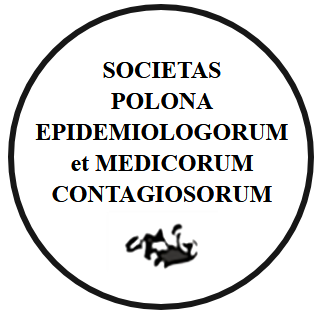ABSTRACT
We present the case of a young patient who developed pneumonia during the COVID-19 outbreak. The course of the disease with involvement of interstitial lung tissue atypical for bacterial infections, the picture of infection markers could indicate SARS-CoV-2. The patient was tested by PCR method on admission with negative results.
Due to the atypical follow-up of the disease, suggesting a severe course of SARS, PCR testing of the material collected by BAL was performed BIOFIRE® FILMARRAY® Pneumonia plus Panel (bioMérieux). Legionella pneumophilla and coronavirus genetic materials were found. We conclude that in the described case there was a bacterial co-infection, paved by virus infection. The similar radiological picture of the two cases of pneumonia, as well as the similar infectious response in the blood, specific for atypical infections, may pose a problem in the differential diagnosis. The study was able to confirm the bacterial etiology of pneumonia and introduce targeted treatment. The patient was discharged from the hospital. We believe that in any case of pneumonia of non-bacterial etiology, extending the diagnosis with a PCR pulmonary panel allows early and effective treatment of patients. In the treatment of patients with pulmonary interstitial lesions in the course of virus infections, one should always keep in mind the possibility of atypical co-infections.
STRESZCZENIE
Przedstawiamy przypadek chorej, u której doszło do zapalenia płuc w czasie epidemii COVID-19. Przebieg choroby z zajęciem tkanki śródmiąższowej płuc był nietypowy dla zakażeń bakteryjnych, obraz markerów zakażenia mógł wskazywać na SARS-CoV-2. Przy przyjęciu pacjentki wykonano badanie wymazu z tylnej ściany gardła metodą PCR, uzyskując wynik ujemny. Ze względu na nietypowy przebieg choroby, sugerujący ciężki przebieg COVID-19, wykonano badanie PCR materiału pobranego z BAL (Broncho-alveolar lavage - Płukanie pęcherzykowo-oskrzelowe) testem BIOFIRE® FILMARRAY® Pneumonia plus Panel (bioMérieux).
Stwierdzono obecność materiału genetycznego Legionella pneumophilla i koronawirusa. Uważamy, że w opisanym przypadku doszło do współzakażenia bakteryjnego utorowanego przez infekcję wirusową. Podobny obraz radiologiczny zapalenia płuc, podobny obraz markerów infekcji we krwi, charakterystyczny dla zakażeń atypowych, może stanowić problem w diagnostyce różnicowej. W badaniu udało się potwierdzić bakteryjną etiologię zapalenia płuc i wprowadzić celowane leczenie. Pacjentka stanie dobrym została wypisana ze szpitala.
Uważamy, że w każdym przypadku ciężkiego zapalenia płuc o niejasnej etiologii rozszerzenie diagnostyki o panel płucny PCR ułatwia wczesne i skuteczne leczenie chorych. W leczeniu pacjentów ze zmianami śródmiąższowymi płuc w przebiegu zakażeń wirusowych należy zawsze pamiętać o możliwości wystąpienia atypowych współzakażeń.
You can change cookies settings in your browser. Restricted use of cookies in the browser configuration may affect some functionalities of the website.





